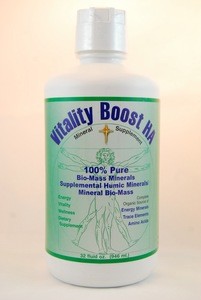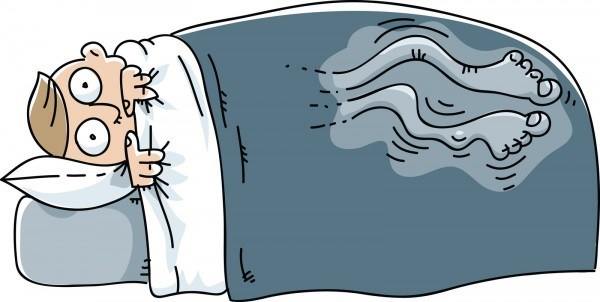Got Restless Leg Syndrome (RLS)? You need minerals.
Great. Thanks for reading.
Just kidding.
I know it’s not quite that simple. Plus I do have a little more to say on this despite the relatively simple approach to this common and challenging problem.
If you are unfamiliar, RLS, also known as Willis-Ekbom disease (WED) or Wittmaack-Ekbom syndrome, is a neurological disorder characterized by an irresistible urge to move one’s body to stop uncomfortable or odd sensations. It most commonly affects the legs, but can affect other areas as well. Moving the affected body part modulates the sensations, providing temporary relief. According to WebMD it effects about 10% of the population.
Although a variety of treatments exist, adding minerals to your diet continues to prove an excellent first move. This simple, easy and cheap intervention helped the dozens of patients I’ve seen with RLS. If it didn’t remove the symptoms entirely, it at least reduced symptoms in everyone. It’s worked enough times that I found it hard not to notice the effectiveness of the treatment.
Despite my experience, there is a scientific component to the treatment. But before I get to the science, I want to address the experience element directly – basically the results we’ve seen in years of clinical practice.
Whether your problem is full-blown restless leg syndrome (where you wake up each morning with the bed in a shambles because you flailed around all night trying to calm the discomfort), or your problem is simply some aching and restlessness in your legs when you sit for a prolonged period, this intervention can help. I say this to express how minerals effect the spectrum of this condition in a very direct, effective way.
There’s a secret to this treatment.
Start taking a clean, high quality liquid multimineral supplement every day. Not a multivitamin that contains minerals. That won’t do it. Not just some calcium and magnesium. Let me be clear: take a high dose of a clean, high quality liquid multimineral supplement once a day, away from any other food, drug or supplement. (Clean means low in heavy metals. Not none. Anything grown in the earth has trace amounts of heavy metals. Clean means no more heavy metals than you would find in a potato.)
In my practice I prefer supplements derived from humus over those derived from shale. Humus is ancient plant matter, and the minerals contained in plant matter of any sort are chelated, stable and very well absorbed by human beings. Ancient humus is free of the heavy metals and radioisotopes that are increasingly polluting the surface of the Earth since the beginning of the industrial age. The minerals derived from shale come from the bottoms of ancient seas and have a much higher level of heavy metals, so I don’t recommend them.
A variation on the humic minerals is often labeled as fulvic minerals. Fulvic minerals are simply the soluble fraction of minerals derived from humus. Humic minerals include both the soluble and colloidal fractions. Humic minerals are more robust, have a higher concentration of minerals and are a better value. This is what I recommend for most people.
If you don’t understand the difference between soluble and colloidal, don’t worry. Perhaps I can give a short breakdown of this difference. In a true solution, for instance salt in water, the molecule of salt divides into a sodium and a chloride atom. Each of these then becomes bound to the water by weak forces and electrostatic forces. Essentially they become part of the crystalline structure of the water. (Water behaves as a crystal, with a crystalline structure.)
You cannot filter the salt out of the water with even a very fine filter. In a colloidal solution, very finely divided particles are able to remain suspended in the water without settling out due to gravity. You can filter these particles out of the water. So the benefit of the soluble solution comes down to the fact that more of the beneficial material remains in the substance. A dose of such a mineral supplement provides a better return.
In the end the point is to try the humic minerals and see what they do for you.
“Is there a lab test I can get that will show that I need minerals?”
Yes and no. The laboratory testing typically done looks for mineral levels in your serum. If you’re unfamiliar, serum is an amber-colored, protein-rich liquid that separates out when blood coagulates. It turns out that the serum level of minerals do not represent your total body load of minerals. Your muscles and tissues may be quite deficient in minerals, yet your serum levels may look within the normal range.
There is more specialized laboratory testing that looks at the mineral levels in the red blood cells. The mineral levels within the red blood cells better represents the levels of minerals in your tissues. Red blood cells can reflect levels of beneficial and toxic minerals and is a useful test, but is not covered by most insurance plans.
We usually don’t do testing before starting someone on minerals, since taking the minerals we recommend is one of the safest things you can do. If you take the minerals we recommend for six months and don’t see any benefit for yourself, you will have ended up spending less money on the minerals then what you spent on a single laboratory test. We’ve noticed that everyone who’s taken the minerals for six months keeps taking them because they see such great benefit.
In the scientific literature for restless leg syndrome (RLS), scientists tend to focus on the efficacy of individual minerals. The statistical methods that allopathic medicine uses demands that things be studied one piece at a time. The math that medical researchers use does not allow the study of a multimineral supplement. There are simply too many variables to study.
Medical science looked at giving people with RLS just one mineral – like iron, magnesium, calcium or potassium. With each of these single minerals they do see a small response. Now a small response is better than no response at all certainly. We understand that. Our experience suggests that taking a multimineral supplements boosts this response even more, because it combines these different types of minerals in a very powerful way.
(If the multimineral like the one we recommend below does not cure the problem, add additional magnesium in the form of magnesium malate. We also have a simple Chinese herbal formula when mineral and extra magnesium are not enough.)
We are asking you to be brave.
In todays world it’s hard to know which methods provide safe support and which do not. It takes courage to break from your usual routine and try something you might not know much about. In general our understanding about the role of minerals in our lives is limited. Plus having such a simple solution can seem too good to be true.
We think bravery in these moments pushes us to step outside our comfort in a good way. Take a supplement that is cleaner and safer than much of the food you probably eat, and see if it helps you. Just try it. Let your body give you the feedback. Maybe you don’t have a disease, maybe you just need more minerals in your diet.
To check out one of the brands we like, just follow the link and check it out. (Vitality Boost HA Humic Minerals).

Regardless of whether you do or not, think about boosting your intake of minerals. As always source is important, so keep that in mind.
Although at one time much of our minerals came from the food we eat, this is just not the case anymore. The general quality of our food lacks the nutritional punch it once delivered. The long term effect of this deficiency shows itself in issues such as RLS.
In Part Three in our series on minerals, we explore this issue in more detail. We look at ways to bring minerals into your diet so that this becomes part of your overall health plan.
In the meantime, let us know how you approach minerals in your life. Do you take them? Do you not? Leave a comment and let us know about it today. Your sharing benefits others. We learn from your wisdom.
Thanks for reading and keep a look out for Part 3.
Until then – To Your Health.
Images courtesy of © Can Stock Photo Inc. / blamb
and Carlyle Coash

